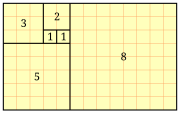Ming
New member
- Joined
- Apr 7, 2010
- Messages
- 483
- MBTI Type
- ENFP
- Enneagram
- 2w3
Three identical integers greater than 1 are written on a board. One of the numbers is rubbed off and replaced by a number which is one less than the sum of the two. This process is repeated a number of times. The number rubbed off is always chosen so that it is different from its replacement.
Adam wants to get the number 2010 from as many starting triples a, a, a as possible. One way (obviously) is to start with 2010, 2010, 2010. What are all the other ways?
Adam wants to get the number 2010 from as many starting triples a, a, a as possible. One way (obviously) is to start with 2010, 2010, 2010. What are all the other ways?



 (I'm not joking..)
(I'm not joking..)




